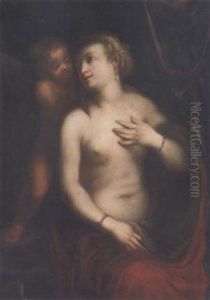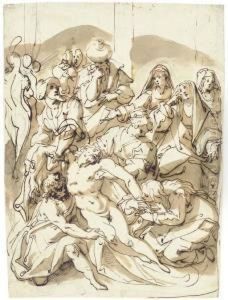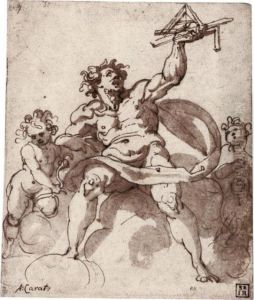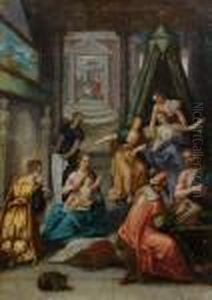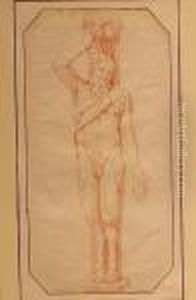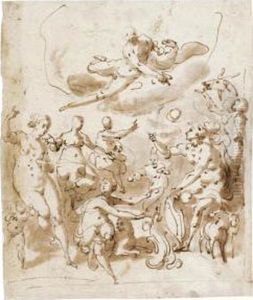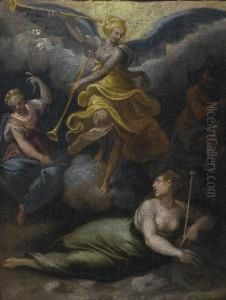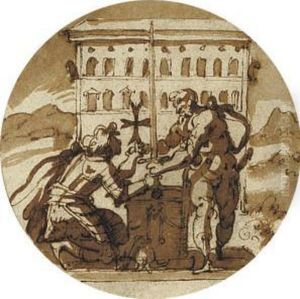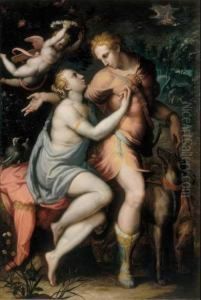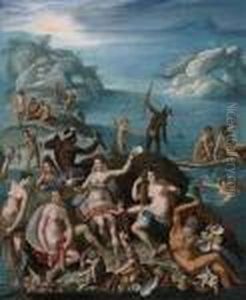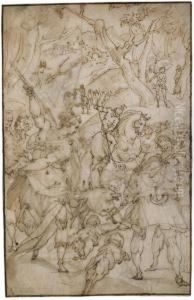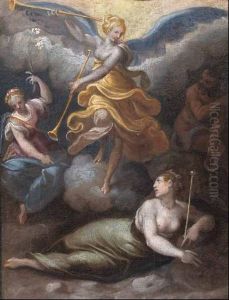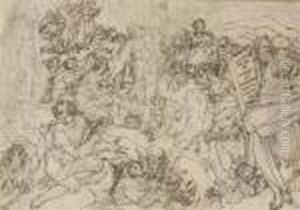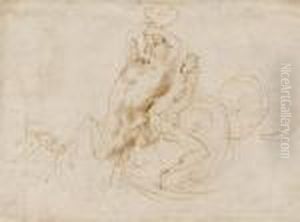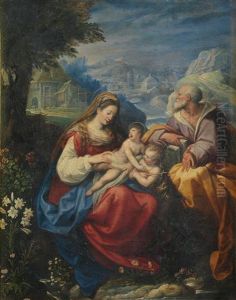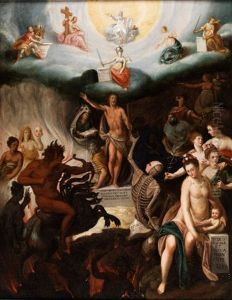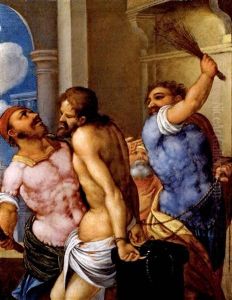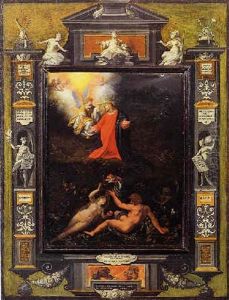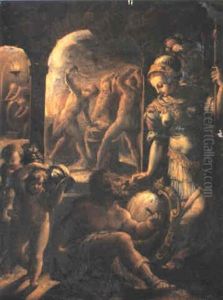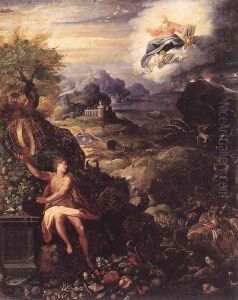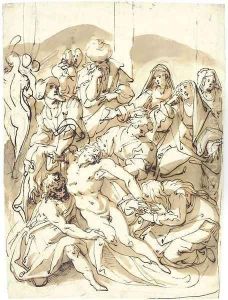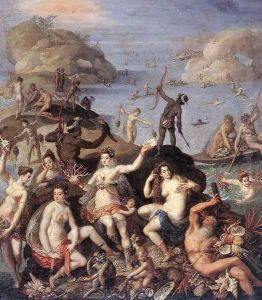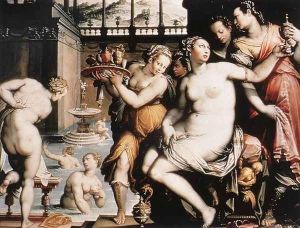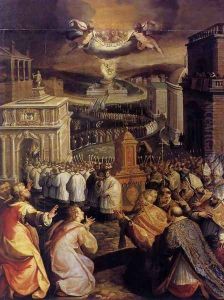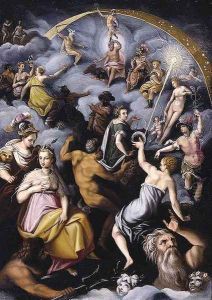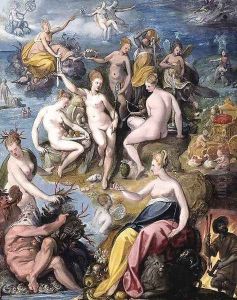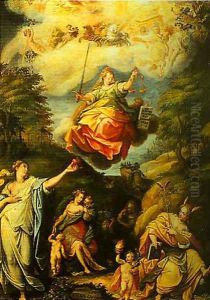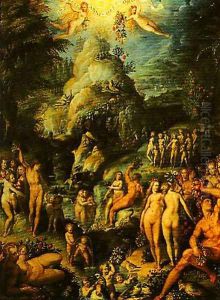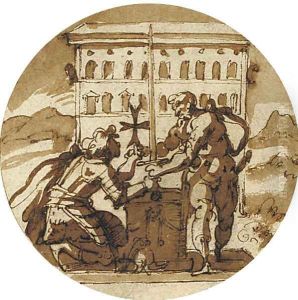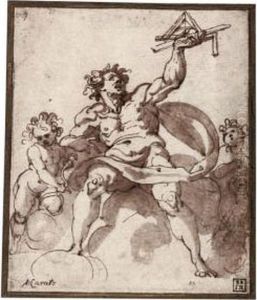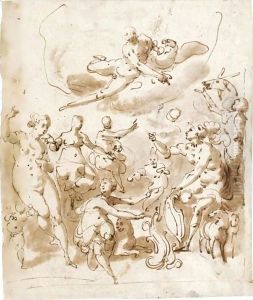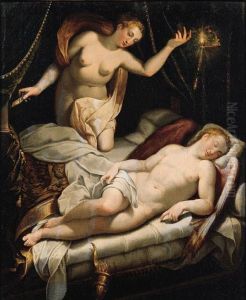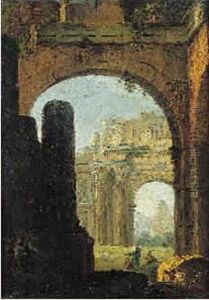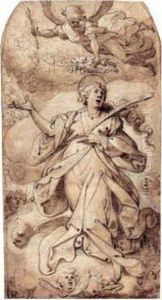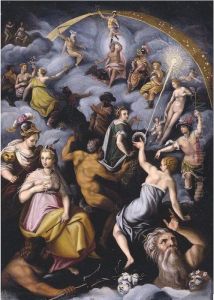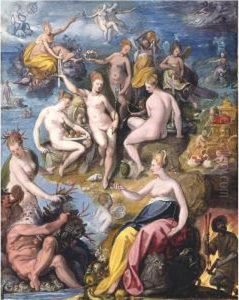Jacopo Zucchi Paintings
Jacopo Zucchi was a notable Italian painter of the Mannerist period, born in Florence in 1541. He was recognized for his detailed and ornate style, and he often worked on both large-scale frescoes and smaller cabinet paintings. Zucchi received his initial training in the workshop of Vasari, who was a prominent artist and art historian of the time. Under Vasari's guidance, Zucchi developed his skills and was exposed to the artistic innovations happening in Florence, which was then a vibrant center of the Renaissance movement.
Zucchi moved to Rome around 1572, where he became involved with the court of Pope Gregory XIII. His talents were employed in decorating the Vatican and other Roman churches, where he worked alongside his brother, Francesco Zucchi, who was also an artist. One of his significant contributions was his work on the frescoes of the Apostolic Palace in the Vatican. Jacopo Zucchi's style was characterized by graceful figures, elaborate decoration, and the use of vivid colors, which were typical of the late Mannerist aesthetic that sought to go beyond the naturalistic constraints of High Renaissance art.
Besides his frescoes, Zucchi was known for his smaller-scale paintings, which often dealt with mythological or allegorical subjects. These works were highly prized by collectors for their intricate detail and the intellectual nature of their themes. He was also a designer of tapestries and an art theorist, contributing to the artistic discourse of his time.
Zucchi's later years saw him continue to work for important patrons, including the Medici family in Florence. Despite his success, he did not establish a large workshop or leave behind a significant school of followers. His death in Rome in 1590 marked the end of a career that had seen him contribute to some of the most prestigious artistic projects of the late 16th century in Italy. Today, Zucchi's works can be found in various museums and collections, where they continue to be studied and appreciated for their elegance and complexity.
